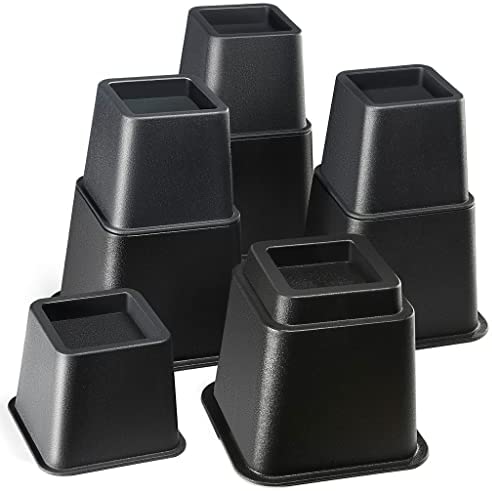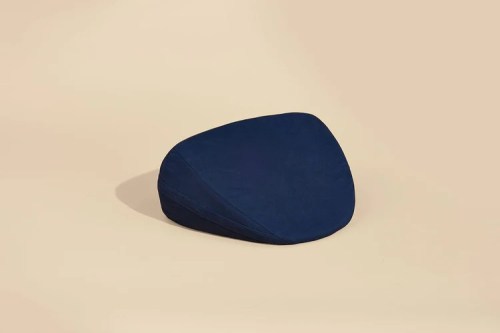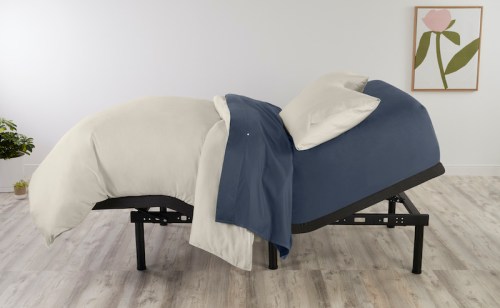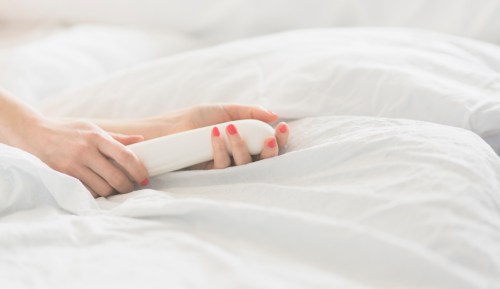Our editors independently select these products. Making a purchase through our links may earn Well+Good a commission
Sleep is such a vital part of health that the global home bedding industry sat at a cushy $87 billion in 2021, and is expected to reach $95.7 billion by the end of 2022. While chic (and sustainable) bedding brands like Brooklinen, Dusen Dusen, and Parachute Home, as well as high-quality mattress companies like Casper, AmeriSleep, and Beautyrest, are steadily increasing interest in the market, Grand View Research found that the very bases that beds sit upon are also adding to the rapid growth. In fact, they found that in 2020, sales for adjustable bed bases began to rise, and it’s been an upward trend ever since. The reason? Inclined bed therapy is gaining traction. Retirement homes and assisted living individuals aren’t the only ones who can benefit from elevating their sleep (in the most literal sense).
Experts in This Article
sleep expert and director of the Sleep and Health Research Program at the University of Arizona
According to Michael Grandner, PhD, a Casper sleep advisor and the director of the Sleep and Health Research Program at the University of Arizona, many adults can benefit from adjustable beds. It all comes down to what other factors are at play.
A 2017 study in the Journal of Sleep and Breathing found that a mild degree of head-of-bed elevation (7.5°) significantly improves breathing among people with sleep apnea. This may also help people who get short of breath while lying down—a phenomenon called orthopnea. In 2021, BMC Practice (an open access, peer-reviewed journal) published a study indicating the positive benefits of inclined bed therapy on acid reflux.
And another 2021 study in the International Journal of Health Sciences and Research found that inclined bed therapy is incredibly beneficial for bedridden patients’ pulmonary function and oxygen saturation. Meanwhile, a 2022 study conducted by SleepScore Labs found that inclined bed therapy led to a 7 percent relative reduction in snoring duration, 4 percent fewer awakenings, and a 5 percent increase in the proportion of time spent in deep sleep. And then there’s the fact that inclined bed therapy helps with circulation as well.
Part of what makes inclined bed therapy such a stellar development for overall health is just how unobtrusive it is. Unlike sleep apnea machines and anti-snoring mouthpieces and masks, simply raising the head of your bed doesn’t interfere with whole-body comfort, let alone facial comfort and the ability to roll over while sleeping. It’s because of this that more and more clinical trials are being explored for the benefits of inclined bed therapy. Currently, scientists are researching the effects of inclined bed therapy on lying blood pressure, as well as on recovering Covid-19 patients.
In addition to these criteria, Grandner admits that inclined bed therapy can help those with chronic pain, as well as those with more minor pain issues.
How To Incorporate Inclined Bed Therapy Into Your Sleep Routine
Convinced that it’s time to try raising the head of your bed for yourself? There are a few ways you can go about it.
Hoping To Test Before You Invest? Try Bed Risers or Wedge Pillows
Since adjustable bed frames can be quite expensive, other products exist to manipulate the elevation of a mattress. If you ever lived in a college dorm, you’re likely familiar with bed risers, the heavy-duty plastic shoe-like platforms that fit the bottom of each bed leg.

Home-it Adjustable Bed Risers — $20.00
While bed risers are typically sold in sets of four, it is possible to use just two of them to effectively raise the head of your bed. That said, given beds are designed to sit flat and steady on the floor, elevating half of the frame off the ground could potentially lead to a wobbly sleep space.
With that in mind, we suggest buying a wedge pillow or two for your bed. Sold in all sizes, wedge pillows are much more versatile and allow users to lift their head or legs, and can even be used as a sex accessory or a convenient lap pillow should you wish to work in bed.

MedCline Reflux Relief System — $250.00

Helix Wedge Pillow — $95.00

Dame Pillo — $95.00
Ready To Invest? Buy an Adjustable Bed Frame
If you’re already stoked about all the ways inclined bed therapy could boost your sleep, you may feel inclined (see what we did there?) to go all in with an adjustable bed base. Fortunately, there are a number of high-quality options to choose from. The best part is that these frames can be used flat or adjusted to just the right height at the head, foot, or both areas of the bed. So now the only question is, which will you choose to elevate your sleep?

Casper Adjustable Base Max — $2,195.00

Saatva Lineal Adjustable Bed Base — $1,408.00

Classic Brands Massaging Zero Gravity Adjustable Bed with Wireless Remote — $585.00

Avocado Eco Adjustable Base — $1,188.00
Sign up for the Well+Good SHOP Newsletter
Get exclusive deals on wellness, beauty, fitness, and food products that have been hand-picked by our editors.
Got it, you've been added to our email list.











